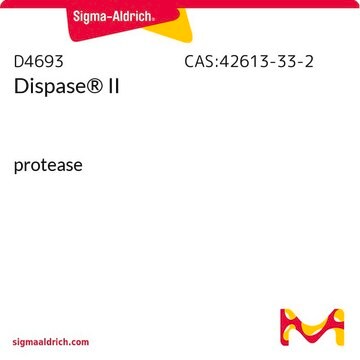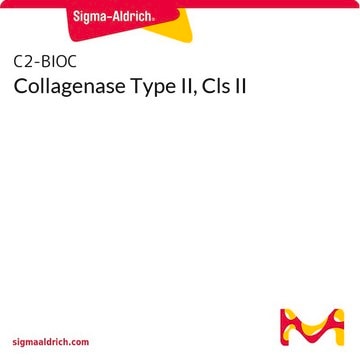Transportation information can be found in Section 14 of the product's (M)SDS.To access the shipping information for this material, use the link on the product detail page for the product.
Q2876
Quinacrine mustard dihydrochloride
≥85% (HPLC)
Sinônimo(s):
2-Methoxy-6-chloro-9-(4-bis[β-chloroethyl]amino-1-methylbutylamino)acridine dihydrochloride, 9-[4-(Bis(2-chloroethyl)amino)-1-methylbutylamino]-6-chloro-2-methoxyacridine dihydrochloride
Selecione um tamanho
Selecione um tamanho
About This Item
Produtos recomendados
Ensaio
≥85% (HPLC)
temperatura de armazenamento
−20°C
cadeia de caracteres SMILES
Cl[H].Cl[H].COc1ccc2nc3cc(Cl)ccc3c(NC(C)CCCN(CCCl)CCCl)c2c1
InChI
1S/C23H28Cl3N3O.2ClH/c1-16(4-3-11-29(12-9-24)13-10-25)27-23-19-7-5-17(26)14-22(19)28-21-8-6-18(30-2)15-20(21)23;;/h5-8,14-16H,3-4,9-13H2,1-2H3,(H,27,28);2*1H
chave InChI
JETDZFFCRPFPDH-UHFFFAOYSA-N
Procurando produtos similares? Visita Guia de comparação de produtos
Descrição geral
Aplicação
Palavra indicadora
Danger
Frases de perigo
Declarações de precaução
Classificações de perigo
Acute Tox. 3 Inhalation - Acute Tox. 3 Oral - Repr. 2 - Resp. Sens. 1 - Skin Sens. 1
Código de classe de armazenamento
6.1C - Combustible acute toxic Cat.3 / toxic compounds or compounds which causing chronic effects
Classe de risco de água (WGK)
WGK 3
Ponto de fulgor (°F)
Not applicable
Ponto de fulgor (°C)
Not applicable
Equipamento de proteção individual
Eyeshields, Faceshields, Gloves, type P3 (EN 143) respirator cartridges
Escolha uma das versões mais recentes:
Já possui este produto?
Encontre a documentação dos produtos que você adquiriu recentemente na biblioteca de documentos.
Os clientes também visualizaram
-
What is the Department of Transportation shipping information for this product?
1 answer-
Helpful?
-
-
Is quinacrine mustard, product Q2876, suitable as a viability stain for platelets?
1 answer-
A customer's feedback utlizing the method outlined in Moroi, M. et al., Blood, 88(6), 2081-2092 (1996), stated it performed pretty well, giving a strong green signal using a standard GFP-filter.
Helpful?
-
Active Filters
Nossa equipe de cientistas tem experiência em todas as áreas de pesquisa, incluindo Life Sciences, ciência de materiais, síntese química, cromatografia, química analítica e muitas outras.
Entre em contato com a assistência técnica










![1,4-Diazabicyclo[2.2.2]octane ReagentPlus®, ≥99%](/deepweb/assets/sigmaaldrich/product/structures/366/129/a6ff4175-974d-4fac-9038-b35e508ef252/640/a6ff4175-974d-4fac-9038-b35e508ef252.png)
